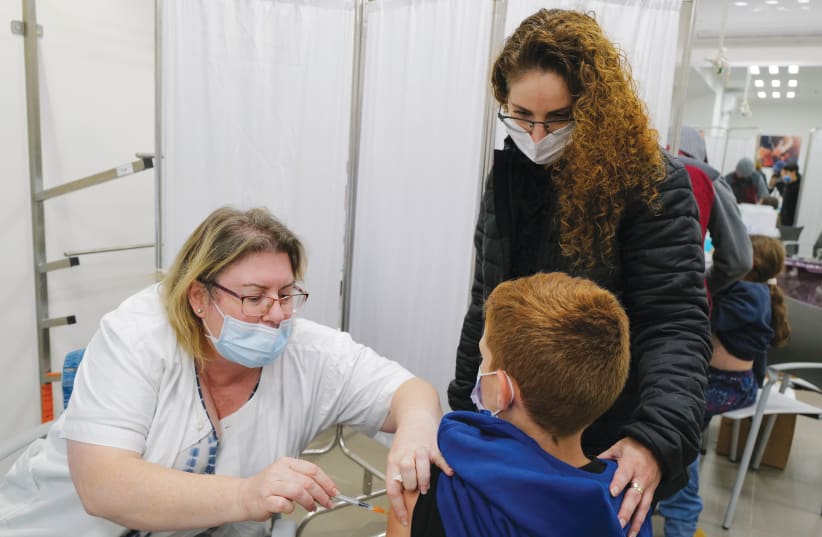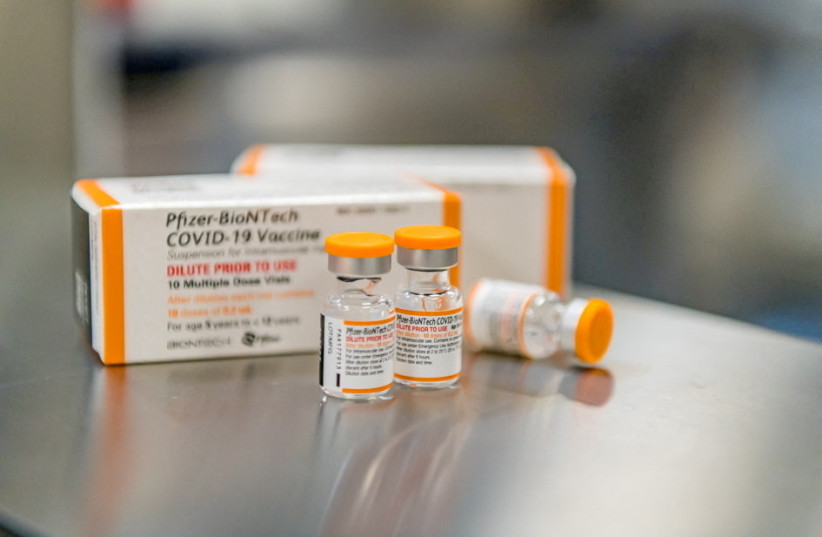On Wednesday, January 5, the government announced a new COVID-19 policy aimed at decreasing the burden on testing facilities. Vaccinated individuals who are exposed to a confirmed case can test out with a single home test if negative, while unvaccinated individuals who are exposed to a confirmed case require a seven-day quarantine period plus two official negative tests to exit. Anyone who has a positive test is required to quarantine for 10 days.
The policy is intended to allow COVID-19 to run rampant (which probably cannot be stopped at this point even with a lockdown) and provides an incentive to individuals to get vaccinated. There is a scientific rationale – unvaccinated individuals are more susceptible to infection and on average are likely to be contagious for longer. They are also most likely to require hospitalization for severe COVID-19 infections and be hospitalized for longer than vaccinated counterparts, creating a tremendous burden on the healthcare system.
However, lumping in children under five who are too young to vaccinate with unvaccinated adults who are exposed to COVID-19 is unfair and medically unjustified. Evidence shows that children are less likely to transmit COVID-19 to each other and have less severe symptoms than adults when they become infected.
Children in school often interact with 30+ classmates plus a rotation of teachers. They are much more likely to be exposed and forced into quarantine than most unvaccinated adults. With the level of cases expected (25-50% of the population infected over two months), these children could easily be put into quarantine weekly or more often.
Should we decide that everyone else can live their lives while these children must stay home in perpetual quarantine until cases go down? Should we tell parents that the only way to enable their young children to attend school, interact with siblings, and live a healthy, normal life is to get infected with COVID-19?
Quarantine for young children is much harder on a family than canceling school or even lockdown. While older children may be able to complete quarantine confined to a room alone and separated from siblings, that would be tremendously difficult and mentally damaging to young children.
While parents allowed to work from home can be reasonably productive with an elementary school child at home, that is nearly impossible with a very young child who needs almost constant parental attention. When a very young child cannot leave the house, a parent cannot bring other children to school without another adult. There is tremendous stress for parents who know that each WhatsApp message or text could indicate quarantine.
Additionally, requiring young children to undergo two antigen tests at a testing center to exit quarantine is drastic. The official testing may require waiting for hours with sometimes-masked people exposed to, or exhibiting, COVID-19 symptoms. Alternatively, they can pay about NIS 60 each time for a test with a shorter line. Parents may be required to drag along other children and struggle to keep their very young children masked.
WHY ARE we penalizing children too young to vaccinate? Why are we penalizing parents and families who have young children?
Here are some potential solutions which should be considered that balance small increases to infection against families’ well-being and ability to earn a living:
Allow children under five to inherit their family’s Green Pass status: If both parents are fully vaccinated or if both parents plus all eligible siblings are vaccinated, confer the Green Pass on the child at least during this surge. Vaccinated families are less likely to cause an outbreak than unvaccinated families.
Allow children under five to complete a home test or a home test in the beginning and a single official antigen test to exit quarantine, so these children do not need to wait in long lines of infected individuals.
Shorten quarantine for children under five to four days post-exposure. While this would not catch every case, it would catch the majority of cases, as Omicron has an estimated average incubation period of 2 to 3 days. This is much more conservative than allowing a vaccinated individual to skip quarantine with a single home test, which may have been taken a day after exposure when symptoms and positive test results are unlikely even if the individual was infected.
Lower quarantine “look back” requirements. For example, look back three days instead of seven days for asymptomatic cases, or four days before symptoms occur. Also, if the person most likely contracted COVID-19 after the last school contact (for example if a student saw an infected relative Saturday and has no other known exposure), do not put classmates into quarantine based on interaction with that student on Friday.
The Health Ministry already has tracked tens of thousands of quarantined school children. A statistician or epidemiologist should study which variables (infected teacher or student, age and vaccination status of an infected individual, age of students, class size, the time between last exposure and quarantine notification, etc.) affect the likelihood of an outbreak based on the exposure. This analysis could help craft a more intelligent quarantine policy, particularly in situations where the spread is statistically less common.
Allow flexibility to families with a young child in quarantine for exposure only. For example, allow these kids to go outside if completely confined to a stroller since there is little chance of infecting others.
As an alternative, lockdown during the Omicron surge and make up the time during August when schools are usually closed.
If changes are not made, notify employers that parents of young children are on halat (paid leave) with the government paying their salaries as in the first COVID-19 lockdown.
I urge our decision-makers to consider the plight of young children and their families in developing appropriate and non-punitive solutions to the COVID-19 crisis. Having children is not a crime and should not be punishable by house arrest.
The writer is a healthcare actuary and grateful mom of five children ages seven and under, including three girls who are too young to be vaccinated.

